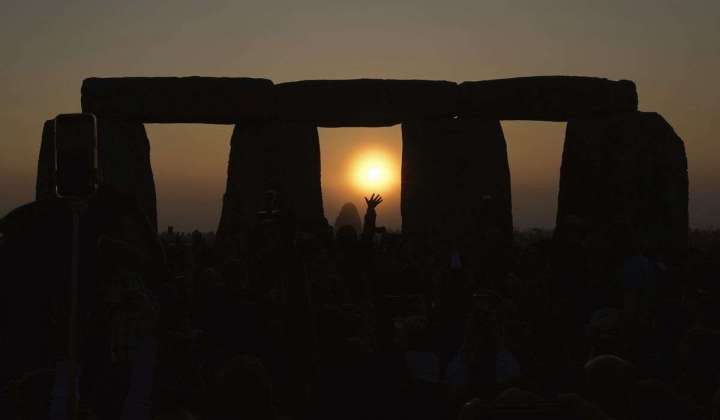4,000-year-old solar shrine uncovered in the Netherlands

Archaeologists in the Netherlands, uncovered a 4,000-year-old solar shrine used for around 800 years during the Bronze Age, archaeologists announced Wednesday.
The complex near the modern town of Tiel is about the size of four soccer fields, and is centered around a trio of burial mounds which contained the remains of 60 men, women and children.
Rows of poles lined paths for religious processions, and archaeologists theorize another pole stood atop the largest mound as a fixed observational point for a priest or shaman.
Around the largest hill, more posts were put in place along with a shallow ditch containing several passages. Combined, the two features helped the religious figures using the site to tell time more exactly.
Akin to Britain’s Stonehenge, the sun shone straight through the passages on certain days, like the winter and summer solstices.
Other finds included human remains and artifacts, including a bronze spearhead and a glass bead, the oldest ever found in the Netherlands, hailing all the way from ancient Mesopotamia, today’s Iraq. In six years of excavation at the site, more than a million distinct objects were uncovered from a number of time periods.
The bead suggests that trade networks had already spread from the Fertile Crescent to the farther fringes of Europe in the time the shrine was used. It is unlikely, however, that the bead traveled from Mesopotamia to what would become the Netherlands in one go.
“Things were already being exchanged at that time. The [bead] may have been above ground for hundreds of years before it ended up in Tiel,” archaeologist Stijn Arnoldussen told Dutch state broadcaster NOS, as translated by Google.
Some of the objects found during excavation will be put on public display in the Tiel museum starting Friday and continuing until Oct. 20. A grave containing several people, meanwhile, will be displayed at the country’s National Museum of Antiquities in Leiden.






